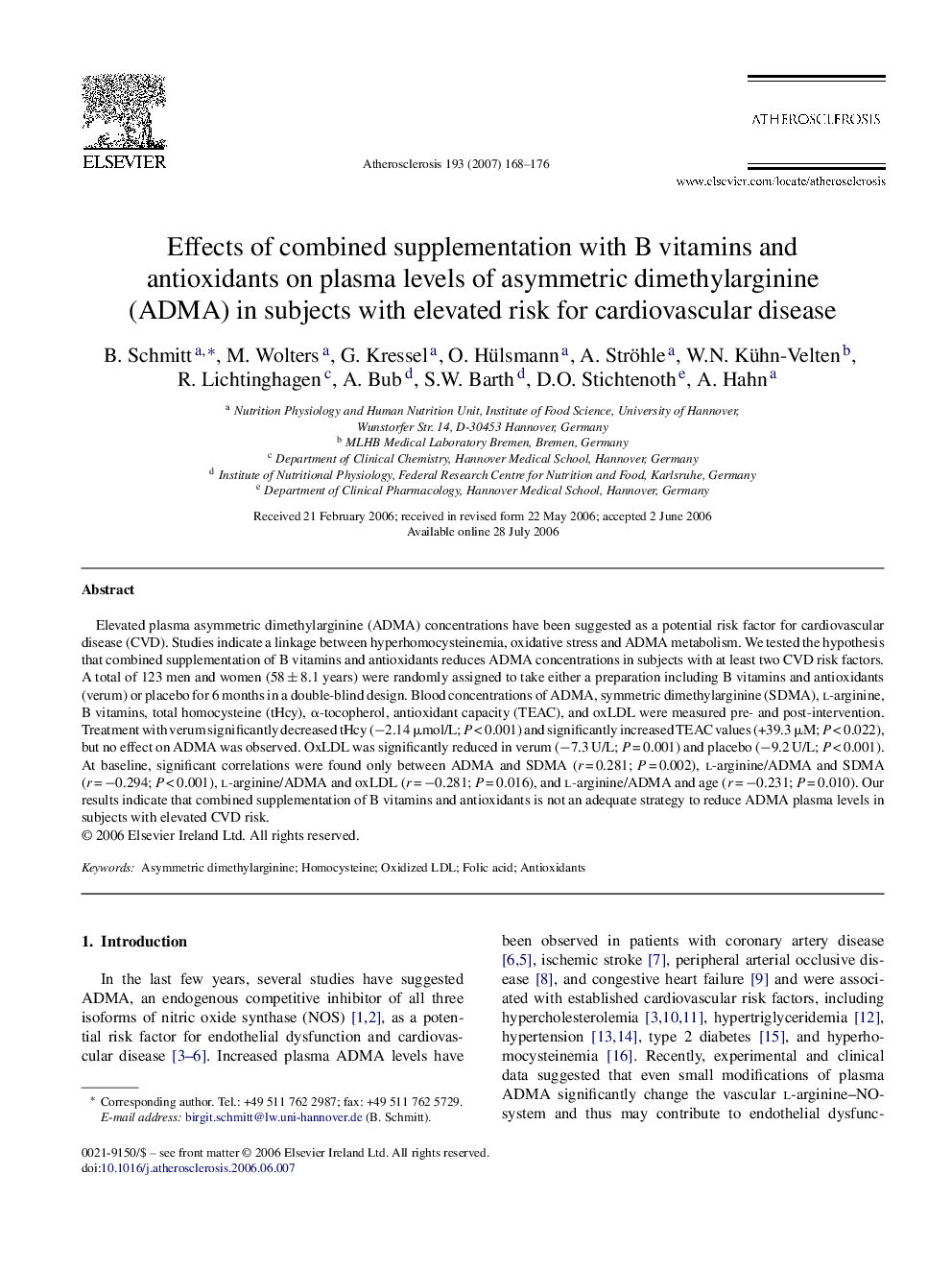| Article ID | Journal | Published Year | Pages | File Type |
|---|---|---|---|---|
| 2894703 | Atherosclerosis | 2007 | 9 Pages |
Elevated plasma asymmetric dimethylarginine (ADMA) concentrations have been suggested as a potential risk factor for cardiovascular disease (CVD). Studies indicate a linkage between hyperhomocysteinemia, oxidative stress and ADMA metabolism. We tested the hypothesis that combined supplementation of B vitamins and antioxidants reduces ADMA concentrations in subjects with at least two CVD risk factors. A total of 123 men and women (58 ± 8.1 years) were randomly assigned to take either a preparation including B vitamins and antioxidants (verum) or placebo for 6 months in a double-blind design. Blood concentrations of ADMA, symmetric dimethylarginine (SDMA), l-arginine, B vitamins, total homocysteine (tHcy), α-tocopherol, antioxidant capacity (TEAC), and oxLDL were measured pre- and post-intervention. Treatment with verum significantly decreased tHcy (−2.14 μmol/L; P < 0.001) and significantly increased TEAC values (+39.3 μM; P < 0.022), but no effect on ADMA was observed. OxLDL was significantly reduced in verum (−7.3 U/L; P = 0.001) and placebo (−9.2 U/L; P < 0.001). At baseline, significant correlations were found only between ADMA and SDMA (r = 0.281; P = 0.002), l-arginine/ADMA and SDMA (r = −0.294; P < 0.001), l-arginine/ADMA and oxLDL (r = −0.281; P = 0.016), and l-arginine/ADMA and age (r = −0.231; P = 0.010). Our results indicate that combined supplementation of B vitamins and antioxidants is not an adequate strategy to reduce ADMA plasma levels in subjects with elevated CVD risk.
